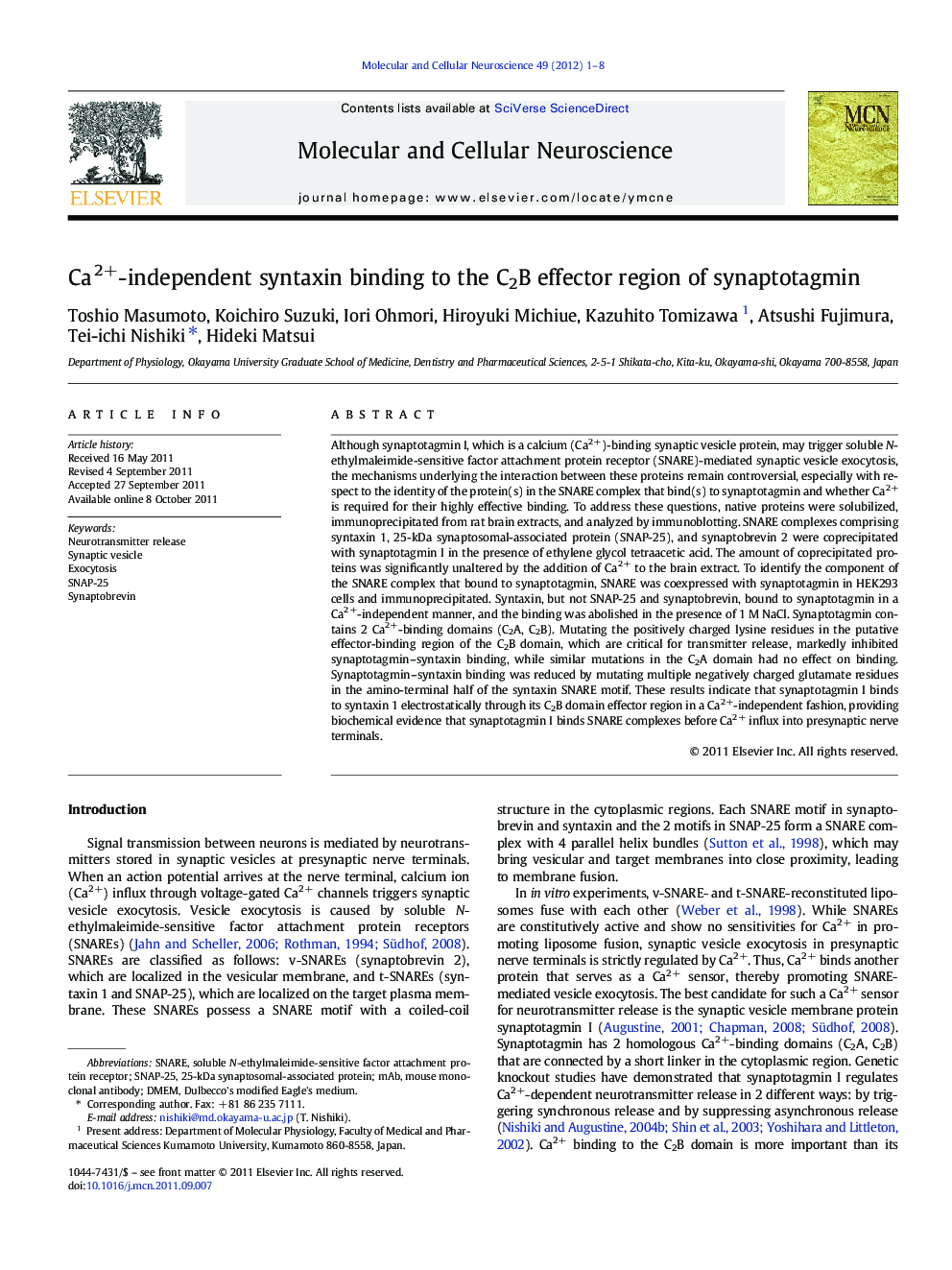| Article ID | Journal | Published Year | Pages | File Type |
|---|---|---|---|---|
| 2198610 | Molecular and Cellular Neuroscience | 2012 | 8 Pages |
Although synaptotagmin I, which is a calcium (Ca2+)-binding synaptic vesicle protein, may trigger soluble N-ethylmaleimide-sensitive factor attachment protein receptor (SNARE)-mediated synaptic vesicle exocytosis, the mechanisms underlying the interaction between these proteins remain controversial, especially with respect to the identity of the protein(s) in the SNARE complex that bind(s) to synaptotagmin and whether Ca2+ is required for their highly effective binding. To address these questions, native proteins were solubilized, immunoprecipitated from rat brain extracts, and analyzed by immunoblotting. SNARE complexes comprising syntaxin 1, 25-kDa synaptosomal-associated protein (SNAP-25), and synaptobrevin 2 were coprecipitated with synaptotagmin I in the presence of ethylene glycol tetraacetic acid. The amount of coprecipitated proteins was significantly unaltered by the addition of Ca2+ to the brain extract. To identify the component of the SNARE complex that bound to synaptotagmin, SNARE was coexpressed with synaptotagmin in HEK293 cells and immunoprecipitated. Syntaxin, but not SNAP-25 and synaptobrevin, bound to synaptotagmin in a Ca2+-independent manner, and the binding was abolished in the presence of 1 M NaCl. Synaptotagmin contains 2 Ca2+-binding domains (C2A, C2B). Mutating the positively charged lysine residues in the putative effector-binding region of the C2B domain, which are critical for transmitter release, markedly inhibited synaptotagmin–syntaxin binding, while similar mutations in the C2A domain had no effect on binding. Synaptotagmin–syntaxin binding was reduced by mutating multiple negatively charged glutamate residues in the amino-terminal half of the syntaxin SNARE motif. These results indicate that synaptotagmin I binds to syntaxin 1 electrostatically through its C2B domain effector region in a Ca2+-independent fashion, providing biochemical evidence that synaptotagmin I binds SNARE complexes before Ca2+ influx into presynaptic nerve terminals.
